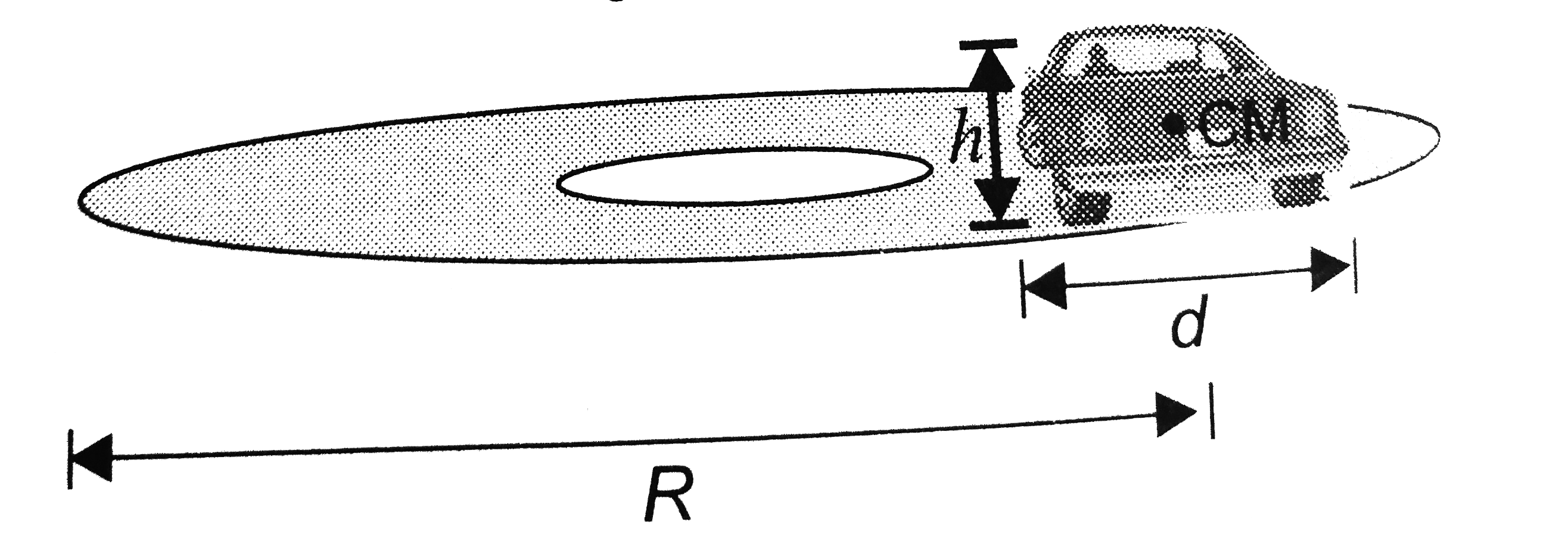If a car is to travel with a speed v along the frictionless, banked circular track of radius r, the required angle of banking so that the car does skid is
θ=tan−1(v2rg)
θ=tan−1(vrg)
θ=tan−1(r2rg)
θ=tan−1(v22rg)
The correct Answer is:A
Step by step video, text & image solution for If a car is to travel with a speed v along the frictionless, banked circular track of radius r, the required angle of banking so that the car does skid is by Physics experts to help you in doubts & scoring excellent marks in Class 11 exams.
Updated on:21/07/2023Topper's Solved these Questions
Similar Questions
 A train(T) is running uniformly on a straight track. A car is travelling with constant speed along section AB of the road which is parallel to the rails. The driver of the car notices that the train is having a speed of 7m/s with respect to him. The car maintains the speed but takes a right turn at B and travels along BC. Now the driver of the car finds that the speed of train relative of him is 13m/s. Find the possible speeds of the car.
A train(T) is running uniformly on a straight track. A car is travelling with constant speed along section AB of the road which is parallel to the rails. The driver of the car notices that the train is having a speed of 7m/s with respect to him. The car maintains the speed but takes a right turn at B and travels along BC. Now the driver of the car finds that the speed of train relative of him is 13m/s. Find the possible speeds of the car.
View SolutionA car is moving with speed v and is taking a turn on a circular road of radius 10 m. The angle of banking is 37∘. The driver wants that car does not slip on the road. The coefficient of friction is 0.4(g=10m/sec2)
The speed of car for which no frictional force is produced is :
View Solution
Knowledge Check
IF the radius of the circular track decreases, then the angle of banking
AincreasesBdecreasesCfirst increase then decreaseDdoes not changeFor traffic moving at 60 km/hour along a circular track of radius 0.1 km, the correct angle of banking is
Atan−1(6020.1)Btan−1[(50/3)2100×9.8]Ctan−1[100×9.8(50/3)2]Dtan−1√(60×0.1×9.8)A car is moving on a circular track of radius 0.1 km with a speed 60 km/h, angle of banking would be
Atan−1(1/18)Btan−1(5/18)Ccos−1(5/18)Dtan−1(18/5)
A car is moving with speed v and is taking a turn on a circular road of radius 10 m. The angle of banking is 37∘. The driver wants that car does not slip on the road. The coefficient of friction is 0.4(g=10m/sec2)
If the car were moving on a flat road and distance between the front tyres is 2 m and the height of the centre of the mass of the car is 1m from the ground, then, the minimum velocity for which car topples is :
View SolutionA car is moving with speed v and is taking a turn on a circular road of radius 10 m. The angle of banking is 37∘. The driver wants that car does not slip on the road. The coefficient of friction is 0.4(g=10m/sec2)
The friction force acting when v=10m/sec and mass of car is 50 kg is :
View SolutionFor a curved track of radius R, banked at angle θ
View SolutionA car moves with speed v on a horizontal circular track of radius R. A head-on view of the car is shown in figure. The height of the car's centre of mass above the ground is h, and the separation between its inner and outer wheels is d The road is dry, and the car does not skid. The maximum speed the car can have without overturning is :
 .
.
View SolutionA racecar, traveling at constant speed, makes one lap around a circular track of radius r in a time t .
Which one of the following statements concerning this car is true ?
View Solution
